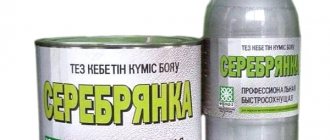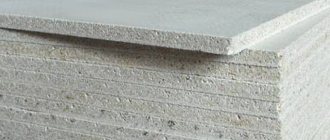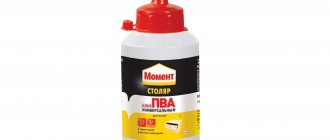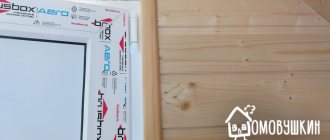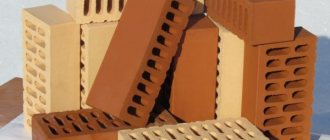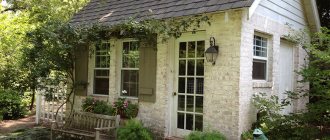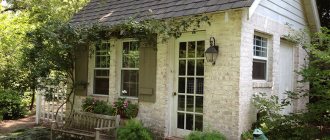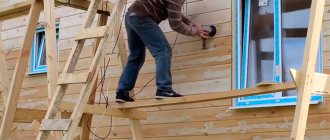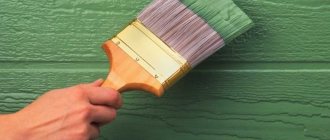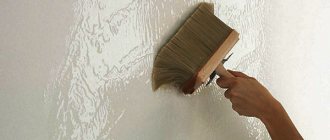People throughout history have sought out various materials for building houses, laying roads, and other engineering tasks. There were great and successful discoveries, and there were also failures. Clinker brick for facade houses and more was born not so long ago, although bricks are already many years old. The Dutch were the first to use this material at the beginning of the 19th century. The best proof that clinker brick has become synonymous with reliability and durability This is due to the fact that after its invention, many factories for its production appeared in Europe and the USA. Further proof of its durability are the very roads and buildings that were built from it in the mid-19th and early 20th centuries. They still delight the eyes of tourists and perform their task perfectly.
Clinker bricks for European-style facades
Many people wonder why it is worth choosing clinker bricks for the facade ? What is good about clinker brick and what makes it special? Also, many are concerned about the decision whether to choose ordinary ceramic bricks or dare and purchase clinker bricks. This is understandable, because the price of clinker bricks is higher, which means that anyone wonders whether the investment will pay off. In any case, be that as it may, in order to carry out exterior decoration properly you need to have at least 4 things: time, money, taste and knowledge . If with the first three a person can only help himself, then with knowledge you can help. This is what we will do in this article.
Your opinion is important to us! Write in the comments what you think, is it worth using clinker bricks for the facade?
Clinker bricks for facades - history
Experts believe that clinker brick is one of the strongest and most reliable materials known to mankind. Such bricks are practically resistant to external destructive influences. Due to its reputation and its properties, professionals recommend using clinker bricks for the facade and decoration of the house. In addition to the fact that clinker brick will reliably protect your walls from almost any influence, it will also give your home a stunning, authentic look . Your home will stand out from other materials and remind everyone of reliable and durable ancient stone buildings. To know the properties of a given brick, you can spend time, it deserves it. And most importantly, you can always show off your home thanks to the amazing properties of this material.
In the last article we already looked at white sand-lime brick and comments and reviews about it. Therefore, according to tradition, let's find out what the meaning of the name clinker brick is and where it came from. In fact, everything is very simple, clinker brick for the facade received its name from the German language, and in particular the word “klirren” , which translated into Russian means “ringing” . This is understandable; it received its name not only for its amazing properties of hardness and strength, but also because of its characteristic sound. When you hit a brick, a loud, distinct sound appears. Of course they influenced the name and features of clinker brick production.
Clinker brick makes a loud sound when struck
Clinker bricks for facades: general information
In itself, clinker bricks for facades are not some kind of supernatural invention. This is the same ceramic material, but it is made from a special type of clay , and also withstands certain conditions during production . For example, when firing clinker bricks, a temperature of 1100-1200°C is used. It is thanks to this temperature that the brick acquires that characteristic ringing sound that we talked about earlier. This sound vaguely resembles glass. In the past, clinker bricks were often called refractory bricks.
The important thing is that thanks to these special production and heating conditions, the brick acquires frost resistance and hardness. But the moisture absorption of clinker bricks is minimal. This combination of properties allows clinker bricks to reliably perform their tasks for hundreds of years . Therefore, experts confidently say that clinker brick is a unique material . This means that your home will amaze everyone with its beauty and grandeur for many years to come.
Clinker bricks for house facades and cladding
To understand in more detail all the properties of clinker bricks, we will take a closer look at how they are produced . This knowledge will help you choose the best clinker brick from the variety available on the market. The point is that you will know what to look for when choosing, so that the brick will really serve you reliably for a very long time.
Production of clinker bricks
What is so special that they use in the production of clinker bricks that its properties have such amazing properties. To start the production of clinker bricks, we will need special raw materials, namely kaolin clay . It is she who has special substances, such as aluminum oxide, iron oxide and others, which enhance the properties of the brick during firing and it is they who give it a special shade from cherry to dark purple. But gray and black shades appear due to carbon monoxide. It appears due to the fact that during firing the amount of oxygen decreases. And so, what is required for the production of clinker bricks.
- Kaolin clay.
- Powdered igneous rocks (they increase the volume of glass phase in the product).
- Feldspars.
- Clay minerals. These include silicates, which make up the core mass of clay deposits. As we have already said, thanks to them, brick has all the physical, chemical and mechanical properties that we described earlier.
There are two ways, so to speak, of the production mode of clinker bricks for the facade. The first extrusion method is more popular and widespread. For this method, the following technology is used. The plastic material is continuously pulled through the molding grooves with periodic cutting of the material into individual bricks.
Brick molding chute
The second method is to mold each brick separately . Usually this is done only for very expensive types of material and only for certain special orders. If there are no special conditions that must be observed, then the first method is considered more suitable , since each brick is the same size and has the same shape. And this makes working with such material much easier.
Process of making clinker bricks
- Components intended for production, first of all, need to be moved. You should get a homogeneous clay mass.
- The resulting mixture must be diluted with water and run through the extruder. Thanks to this, the material takes shape.
- Next, the resulting workpieces need to be dried. this is necessary in order to reduce the amount of moisture contained in the bricks. Dry the brick until the moisture content is 3%. And if we talk about very durable and high-quality products, then up to 2%.
- After this comes the most important process - firing in the kiln. This is usually done in a tunnel kiln. The temperature in this furnace reaches 1200-1300°C. In addition to the type of clay, this is another important difference between clinker brick and regular brick. Ordinary bricks are also fired in a kiln, but the temperature in such kilns usually does not exceed 1000°C, or even less.
Clinker brick production technology
Thanks to all the production nuances, the clinker brick is of such high quality that it allows this material to be used in conditions unusual for bricks. Vivid examples would be the use of clinker bricks for finishing swimming pools or even for paving sidewalks . Clinker bricks will perform their tasks successfully in these areas as well.
Clinker drying time
The clinker drying time has been significantly accelerated. Previously, when bricks were dried naturally, the process lasted about 4-5 weeks . Attempts were made to maximize drying time to avoid overloading the material and resulting cracking. To do this, they used a damp cloth and straw. The large amount of water in the clay mixture did not help speed up the drying process. Removing moisture made it easier to add gravel to the mix. Unfortunately, due to the lack of equal proportions and the great randomness in the choice of materials, medieval bricks had much less resistance.
Modern clinker is dried in tunnel dryers and the time required to obtain the final material is about 2 days . During this time, the clinker brick reduces its size by about 8% and loses 1 liter of water . It is much stronger than those produced previously. It is frost-resistant and has much better technical parameters.
Clinker bricks for the facade: its advantages and disadvantages
Now we have come to the point where it is time to list all the general advantages of clinker bricks, as well as its disadvantages. You and I are smart and educated people and we know that there are no ideal building materials . Each material is suitable in the area where its properties are valuable.
Advantages of clinker bricks
Conventionally, all existing facade bricks can be divided into two types - facing and clinker bricks . But if you compare these two types. then clinker brick is definitely better in all respects. Here are all the advantages of this material.
Types of bricks
High strength
Clinker bricks for facades have very high bending and compressive strength. It is several times superior to other types of bricks in this indicator. Another important feature of clinker bricks is that they hardly wear out. grade of such a brick is M400-M1000 , which means that a wall made of clinker bricks will last for hundreds of years. It is thanks to this high strength that clinker bricks can be used in road paving.
Does not absorb moisture
Clinker bricks practically do not absorb moisture . We all know that water destroys material over time, especially water that gets inside. Therefore, professional builders are very fond of clinker bricks, the whole point is that it does not absorb water even if such a brick is immersed in water, unlike sand-lime bricks. Thanks to this property, clinker bricks are absolutely not afraid of any weather conditions : rain, snow, fog, high humidity and others.
Frost resistance
The frost resistance of clinker bricks can reach 200 cycles . The whole point, again, is low moisture absorption, it is thanks to this that clinker bricks for facades are able to withstand 200 cycles of freezing and defrosting without losing their properties. And this figure is not the limit. Even if you now look at those buildings that were built from clinker bricks 200 years ago, when they were first invented, they still stand and look very reliable. Is other evidence needed?
Amazing durability
Clinker bricks for facades have truly amazing wear resistance . In addition to the fact that it is not exposed to weather conditions, it is also not afraid of the effects of acids, salts and alkalis. Clinker bricks will perform their main task without fading or drying out in the sun; they are also not afraid of mold or scratches . I'm glad that this effect can be achieved without special additional processing.
Ecologically pure
We know that clinker bricks contain exclusively natural ingredients . This means that clinker bricks for facades are an environmentally friendly material. Moreover, even different shades of brick colors are achieved by using different types of clay, rather than chemical dyes. , a combination of durability and environmental friendliness is rare
Variety of colors
Clinker bricks for facades have a rich variety of colors . Such diversity can surprise and delight anyone, even the most spoiled buyer. Clinker bricks have another ace up their sleeve. In addition to the variety of shades, it also has a variety of textures and textures. To achieve a special texture, clinker bricks are shotcrete. This means that mineral chips are applied to it before it is sent to the kiln for firing.
Clinker brick for facade with mineral chips
Long service life
Clinker bricks can serve you for many years. Long service life is another advantage of clinker bricks. All the properties that we have discussed before guarantee you that your house will last 200 years or more . Experts who studied the masonry of clinker brick buildings that were built 150-200 years ago concluded that such buildings can last just as long.
Variety of sizes and shapes
In principle, this point is true for almost any brick. The simple fact is that individual orders for clinker bricks are much more common. of any shape, size and color at your request . And this allows you to bring even the most daring design ideas to life.
Wide scope of use
If we summarize all the mentioned characteristics and the fact that clinker bricks can be of any color, shape and size, then we can safely conclude that such bricks are used in different fields and areas of construction . These areas include the construction and cladding of external and internal walls, the construction of bridges, columns, sidewalks and various sites.
But we must understand that there is simply no point in using clinker bricks where ordinary sand-lime bricks can be used. It's all about economic benefit. The cost of clinker bricks is several times higher than the cost of standard bricks.
Problems that clinker bricks solve
In order for us to better understand all the advantages of clinker bricks, we will look at several problems that are inherent in ordinary bricks, but are not typical for clinker bricks. This will help you understand the difference and make the right choice in favor of one or another material.
- Low frost resistance leads to destruction . Simple brick, especially if we talk about hollow brick, i.e. with holes absorbs moisture during operation, and this leads to the destruction of the brick. The walls of such bricks begin to crack and break. Clinker bricks for facades can also be hollow, but they are not afraid of . It is able to withstand loads even after 90-100 years.
- The appearance of salts on bricks . If you look closely at brick buildings, you may notice a white coating on some of them. Builders call this coating efflorescence. In simple words, it is the release of salts and sulfates that are present in the clay. bricks do not have this problem either ; the fact is that all the salts come out of it due to firing at high temperatures.
- The so-called "Shots". This problem is again related to the composition of the brick. If the clay is not mixed well enough, calcium and magnesium carbonates will be present in the mixture, and when fired at a temperature of 1000°C they will not melt. later they seem to “shoot out”, which means that they damage the brick from the inside. The danger of such shots is that they cause cracks in the brick. The situation is different with clinker bricks . Due to the fact that the brick is fired at a higher temperature, all carbonates are melted without any problems, which means that the problem is solved before it even begins .
Efflorescence
Disadvantages of clinker bricks
But it is also impossible to say that clinker brick is an ideal material without disadvantages and shortcomings. Clinker bricks have their own disadvantages that need to be taken into account. Therefore, next we will consider all the disadvantages of clinker bricks in more detail.
High price
When choosing clinker bricks for construction, you must understand that this type of brick is considered the most expensive among all other bricks. Therefore, unfortunately, we must admit the fact that many simply cannot afford it. Even if you can raise the money to buy the bricks themselves, you will have to use a special mortar to lay them, and this will also cost a pretty penny.
We need specialists
Of course, it is advisable to look for professionals in everything, but with clinker bricks the situation is even more serious. It's all about that very solution. with this solution . and if a person works with it for the first time, then there is a high probability that in the future such masonry will crack or even collapse. So it turns out that you need to spend more money on a professional in order to save in the future. Therefore, this should also be taken into account when choosing clinker bricks for the facade.
High specific gravity
At first glance, the seemingly insignificant problem of high specific gravity of brick affects many things, including the cost of construction as a whole. To begin with, we note that the weight of standard size clinker bricks is not small, about 3.5 kg . This weight is due to the fact that during production the porosity of the material is reduced, which means the weight of the product increases. It turns out that the solid weight of the façade brick puts a serious load on the foundation . To solve this problem, many experts recommend building an additional foundation when using clinker bricks. The problem is solved, but the construction cost will be much higher.
Does not allow air to pass through
Clinker brick has low vapor permeability. This is again due to the fact that the brick has practically no pores, which means that such a brick practically does not let air into the building. This negative property makes it difficult to maintain a normal microclimate in the house. This means that residents will have to ventilate such houses more often.
High density
High density is not always a plus. If the material has a high density, it will lose heat very quickly. This is exactly what happens with clinker bricks. Statistics show that clinker bricks lose heat 1.5-2 times faster compared to ordinary bricks. Therefore, a façade made of clinker bricks cannot be considered insulation for a house.
Insulation for clinker bricks for facades
Durability interferes with work
The high strength of the material is one of the main advantages of clinker bricks, but not for the mason who lays it. The thing is that high strength makes working with brick very difficult. It is difficult to spray and almost impossible to split evenly with a mason's hammer.
Same color
To maintain the same color scheme, you need to buy the required number of bricks from one batch. The fact is that production technology cannot always guarantee the same shade of the material. Of course, this cannot be called a serious disadvantage of clinker bricks, but still. this creates certain inconveniences in some cases.
But you need to understand that the high price for the material itself and its installation, one way or another, is explained by the fact that this is a one-time investment . The finished coating is unlikely to bother you or require any additional care. This means no future expenses.
Manufacturers and product prices
Clinker blocks are very popular. There are several manufacturing companies operating on the modern market. Among them, the most famous are:
- the domestic LSR group has four factories, produces high-quality bricks from Cambrian blue clay, 9 shades are offered, the company is one of the world leaders in the production of clinker material;
- GRH Group has opened branches in 25 countries, produces professional-grade material, production is carried out on modern high-quality equipment;
- one of the reputable manufacturers is the German manufacturing company Wittmunder Torfbrand Klinkerwerk, which produces classic clinker bricks using a unique ancient technology without the use of artificial dyes and chemicals, for over one century, they produce exclusive bricks of gold and silver shades;
- another long-liver, the Terca plant, has been producing building materials for landscape design and facing work from clinker for two hundred years;
- German companies Feldhaus Klinker and ADW Klinker produce material in a variety of colors;
- manufacturer Rauf from Russia offers high-quality bricks of natural color, made using modern European technologies.
The highest quality products are produced by German factories, which occupy a leading position among other manufacturing countries. Clinker blocks from Germany are distinguished not only by their high quality, but also by their reasonable price. The price per piece reaches 95 rubles, exclusive options cost over 100 rubles. Russian-made bricks are more economical; the cost, as a rule, does not exceed 35 rubles per brick.
Several laying technologies are used: with and without the formation of an air gap, with thermal insulation. The air space is up to 4 cm. This layer is needed for air movement. This technology is applicable to wooden buildings and prefabricated structures.
For buildings being built in areas with a cold climate, I lay an insulating layer between the cladding layer and the wall. Polystyrene or mineral fiber wool is used as insulation material.
To prevent condensation from forming between the wool and the cladding, leave 2 cm. If facade panels are used, a heat-insulating layer is not required.
Types of clinker bricks
We have already learned a lot about clinker bricks. To continue, we need to remember that clinker bricks are divided into 6 varieties. Each subtype of clinker brick has its own tasks, so they can differ from each other not only in shape, but also in properties. Well, let's study each subspecies separately.
- Clinker tiles . This material is used exclusively for decoration, both inside and outside the house. Due to the fact that such material is produced with holes inside, it does not create a dangerous load on the foundation. Clinker tiles have two subtypes, distinguished between clinker for interior decoration and facade clinker . For interior decoration, such material can be useful in lining walls or stoves, and facade bricks are, of course, used for external cladding of buildings or other structures.
- Acid resistant clinker brick. Due to the fact that such bricks perfectly withstand any chemical influences, they are used in places with very harsh climates or for various industrial needs. Near chemical plants, for example, buildings can last much longer than those made of any other material.
- Clinker for technical needs. Continuing the theme of production, such solid bricks are used for laying walls in hazardous areas or for lining chimneys or furnaces. Sometimes such bricks are used in the construction of roads, bridges, and squares. This type of brick is not suitable for cladding .
- Waterproof clinker bricks. This material gets along well with water and steam . For this reason, it is usually used in places such as baths, saunas, swimming pools and other buildings that are in constant contact with water.
- Figured clinker brick. This clinker brick is made to order. The shape of such a brick is made directly for the needs of the future structure. Such a brick takes into account individual parameters and can have various shaped elements, be convex or concave.
- Paving clinker bricks. This brick is specialized for use in laying sidewalks, roads, and if we talk about private construction, garden paths in the yard.
Types of clinker facing bricks
To make an informed choice when choosing clinker bricks for a facade, you need to know some types of facing bricks . Below in the picture you will find the types of surfaces that clinker bricks can have.
Types of clinker brick surfaces
Also, to choose, you need to know the standard sizes of clinker bricks . The picture below shows what standard sizes exist for such bricks.
Standard sizes of clinker bricks
Clinker bricks can be solid or hollow. It can also have different shapes. The so-called additional bricks are produced in various modifications. They are needed in order to make neat transitions during construction and design complex architectural elements. There are about 20 different options for custom-shaped bricks. Such blocks can be used to design various complex elements for execution. For example, arches, columns, bay windows, window sills, basement edges, cornices, corners with depressed or rounded edges and many other elements of architectural art.
Application of additional clinker bricks
Formats and sizes of clinker bricks
Here are a few formats you need to know. These formats are used not only in Russia, but also in Europe. Each format has its own dimensions. In Russia, they mainly use the NF format - 240x115x71 mm, although all types of material are sold. It is important to clarify the format of the bricks before purchasing, especially if you plan to use different ones in construction. This is necessary so that there is no mismatch of materials. The picture shows different formats of clinker bricks.
Clinker brick formats in Russia and Europe
Dimensions
For a long time, there was only one type of brick in the domestic market in terms of dimensions. It can still be found on sale today. Standard brick dimensions are 250*120*65 mm. This size is designated as 1NF and is called single (KO).
If we talk about other types of domestically produced bricks, we can distinguish the following:
- Euro (KE) - has a smaller width compared to its single counterpart, so according to the type of size it is 0.7 NF. Its dimensions are 250*85*65 mm.
- Single modular (SM) has dimensions of 288 * 138 * 65 mm, and its size is indicated as 1.3 NF.
- Thickened brick (THB) is a thicker variety of standard brick; in the product it is 88 mm, type size is 1.4 NF. In addition, there is a modification of thickened brick with horizontal voids (KUG).
- Stone (K) - includes several types of bricks, the length of which is 250 or 288 mm, the width varies between 120-288 mm, and the height is 88 or 140 mm.
- Large-format stone (KK) also includes several types of products, the minimum width of which is 220 mm, the maximum is 510 mm. The width is available in 3 options - 180, 250 or 255 mm. Height ranges from 70 to 219 mm. A type of large-format stone is an analogue with horizontal voids (HCV).
You can learn about the size features by looking at the accompanying documents of the products.
In addition to those indicated, it is important to know the decoding of such designations as P - ordinary brick, L - front or facade, Po - solid, Pu - hollow
The standard description of products looks like this - KOLPO 1 NF/100/2.0/50/GOST 530-2007. At first glance, this is a meaningless set of signs. However, being able to “read” the designations, it is easy to understand that we have a single façade brick with a strength grade of M100, the average density class of the product is 2.0, and frost resistance is 50 freeze/defrost cycles. The product complies with certain GOST standards.
For imported bricks, different symbols are used, since they have different dimensions. Let's look at the most popular options:
- WF - this is how bricks measuring 210*100*50 mm are marked;
- OF – products of a slightly larger format – 220*105*52 mm;
- DF – an even larger type of product with dimensions of 240*115*52 mm;
- The WDF model is characterized by dimensions 210*100*65 mm;
- 2-DF is a larger analogue of DF, having dimensions of 240 * 115 * 113 mm.
These are not all possible dimensions of finishing material. Moreover, most manufacturers have their own size tables and use original markings. Finally, there are hand-molded bricks that do not come in standard sizes.
Due to this variety of sizes, you should start calculating the required amount of brick and purchasing it only after you have precisely determined the type of product you are using and have clarified its dimensions with the supplier.
Properties and technical characteristics of clinker bricks
Let's summarize and list the main properties that clinker bricks should have. You can use these properties as a checklist when purchasing and choosing clinker bricks. In the picture we briefly and clearly outlined all the properties.
Basic properties of clinker bricks
Let's look at everything point by point again. The structure of clinker bricks has practically no pores. The moisture absorption of clinker bricks is minimal, and this ensures high frost resistance. It is important that during construction there are no open planes of hollow bricks through which water could enter. It is the water that gets inside that can tear the brick from the inside when it freezes. High temperature and open fire will not harm clinker bricks. But the soundproofing properties of the material are not so good. Sound waves pass through dense material without problems.
Clinker brick has a feature that may be useful in the future. Such a brick can be disassembled, the insulation replaced and put back. Clinker bricks can be cleaned quite easily from hardened mortar. This means that the material can be reused.
Preparing the wall for cladding
We know that clinker bricks last a very long time , so cladding a facade with such bricks should not have any flaws during the work. Otherwise, the presence of any flaws on the wall will lead to a decrease in the service life of clinker bricks . If you do not fix all the problems in advance, then after installation it will be too late. The insulation must be installed on a completely flat surface. It should not form any gaps or cavities in which liquid can subsequently accumulate. If the insulation gets wet, it will quickly deteriorate, and this is unacceptable and must be avoided at the stage of preparing the wall.
Stages of wall preparation before laying clinker bricks
- It is necessary to completely clean the surface of all foreign objects and materials. Such as old paint, layers, shedding and others.
- All remaining defects on the wall or those defects that appeared during the cleaning process must be filled with putty . If there are cracks, they need to be widened and their structure determined. The fact is that inside they can expand and form large cavities.
- In cases where there are too many problem areas or the defects are large, the best solution in this case would be complete plastering of the wall .
- After leveling, it is necessary to saturate the wall with two layers of primer - primer , which penetrates deeply inside. This action will help strengthen the contact of the wall with the insulation adhesive. It will also strengthen the top layers of plaster and prevent them from collapsing.
- Installing insulation, if done correctly, is not difficult. According to the usual scheme, it is necessary to install the insulation so that there are no cracks or gaps. Various materials can be used as insulation, for example, slab mineral wool, penoplex or polystyrene foam and others.
Insulation between facing brick and base
It must be borne in mind that the choice of insulation is not accidental . This depends on the presence of a ventilation gap between the cladding and the insulation. Materials that are vapor permeable, such as mineral wool, require a gap. And materials that do not have vapor permeability, such as polystyrene foam, penoplex and others, do not need a gap. If you choose vapor-permeable insulation, then you must lay a sealed layer of waterproofing membrane on top of it.
What else is worth remembering?
Clinker brick has a distinctive feature. This is the high-pitched sound made when one brick hits another. The louder the sound, the better the quality of the material. A high tone indicates high elasticity of the clinker.
Clinker bricks should not contain undesirable chemical compounds. We can detect their presence by placing a brick in a container of water. The amount of water should be enough to cover half the surface of the material. If, after some time, a white sediment appears above the surface of the water, it means that the brick will be susceptible to fading. Building materials that do not emit white residue are a much better solution.
Source
Features of clinker brick laying
Let us repeat once again, working with clinker bricks should be done by a professional who knows what the solution should be based on future operating conditions. A person who has started working with clinker bricks must pay close attention to the thickness of the seams and the degree of adhesion.
You can cladding a building either as it is being built or as a final finishing touch.
Specialists who work with laying clinker bricks make a more viscous solution. In other words, the mortar must contain a higher percentage of cement than the mixture for ordinary red brick. Another feature is that the sand should only be river sand. Without clay admixture and well sifted. In order to start laying clinker bricks you need to have:
- mason's hammer;
- building level;
- roulette
- trowel;
- cord and plumb line;
- jointing;
- building code;
By the way, there will also be special devices that you can buy in the store for even laying of bricks. They represent a metal structure, which makes it possible to lay evenly in relation to the existing one.
Clinker laying technology
Checking the condition of load-bearing walls and foundations
An important step before starting to lay clinker bricks is to check the foundation and load-bearing walls. It is necessary to ensure that the load-bearing walls are reliable . To do this, they are checked and if cracks are detected, they must be eliminated and repaired. The foundation also needs to be inspected and made sure that its width is greater than the width of the brick. If this condition is not met, then the clinker brick will have to be replaced with another material. If you find that the existing foundation is cracking and has begun to deteriorate, then you need to replace the damaged areas with new concrete.
It is believed that a water barrier for clinker bricks is not necessary. But all experienced builders still lay a layer of roofing felt.
First row of bricks
You need to start from the corner . We lay the brick in the direction of the other corner dry, without using mortar. It would be nice if the length of the brick is enough for optimal overlap. If it is not enough, you will have to cut off the protruding part of the brick. Experienced builders always buy several halves of clinker bricks. This solution will help you save time and effort, because cutting clinker bricks is not an easy task. When determining the correct layout, we must remember that the cladding can be laid out either flush or with a protrusion of several centimeters.
It is necessary to lay the first row of clinker bricks along the entire perimeter of the building. You need to find the right position. This must be done before laying the bricks on the mortar. It is possible to adjust the laying of bricks, if necessary, by adjusting the gap on the brickwork. Or again use a more complex one - cutting bricks.
Start of laying clinker bricks
Laying out the first line of bricks is very important . It is necessary so that you can determine the exact gap between the bricks . And based on this, determine the amount of solution . And also, if necessary, you can count the number of halves you need and purchase them. This will make your work easier.
Preparing the solution
We have already mentioned the solution above. The mortar for clinker bricks should be thicker and more viscous . This is due to the fact that clinker bricks for facades have low water permeability. Builders with experience working with clinker bricks recommend laying no more than four rows per day . Only after part of the wall has hardened do they continue laying. Also, experienced builders never make a lot of mortar at once . The fact is that laying clinker bricks progresses much more slowly. This means that the solution will thicken and require constant stirring.
Laying clinker bricks
Masonry starts from the corners. First of all, a mortar approximately 1 cm thick is applied , and then they begin to lay several bricks on both sides of the corner. It is important that the length of the first row should be four bricks , and the subsequent rows should be half a brick less. Let us repeat once again, only 4-5 bricks are laid in height per day . As with conventional masonry, the position of the brick is constantly checked with a level. The verticality of the masonry must be checked with a plumb line.
The same scheme allows you to lay out the second corner of the facade. Experts recommend laying out all the corners of the building in sequence. And only after that you can start covering the walls. To make masonry defects less noticeable, it is recommended to start it from the back side of the building. And then gradually move towards the facade.
When you start installing masonry doors or windows, you will most likely need metal corners for lintels . It is not recommended to take corners that are too thick. Firstly, the corners are needed only during the installation process, after which the entire structure will be supported by the mortar. And secondly, too large jumpers will clearly stand out and ruin the appearance. It is important not to forget about unstitching. This can be done only in the first hours after laying the bricks. Since the solution sets quickly. You can choose almost any form of jointing. It just depends on what tool you use for this.
Joint jointing of brickwork
Fixing the cladding to the load-bearing wall
It is necessary to secure the cladding to the main wall . Although many do not pay due attention to this part of the work. They claim that the solution is quite enough for adhesion. The issue is controversial, so we still recommend using fastening. The easiest way to make them is from rebar. It is necessary to drive reinforcement into the main wall. It should go between the bricks, only into the mortar and not go outside beyond the edges of the brick. It will be quite acceptable if you make such fastenings every two meters of brick laying. And after 4-5 rows, respectively, vertically.
How is clinker made?
Although the appearance of clinker has not changed over the past few decades of its use, the methods used to obtain it are completely different.
Clay for clinker
The first step in making clinker is to extract the correct material. Previously, this process was done manually (using a shovel) and the clay was stored in large pits. Substances that accelerate the drying process were added to it and mixed.
The production of clinker on our own took place already in the Middle Ages, as evidenced, for example, by huge works of sacred architecture that have survived to this day. Great importance was attached to the quality of raw materials. People of that time understood perfectly well that the effect largely depended on this. Different types of clays were isolated and, depending on their properties, other substances were added to stimulate the drying process.
We, of course, could learn the accuracy of the selection of exploited raw materials from our ancestors even today. Currently, due to the strong industrialization of the entire clinker production process, not much attention is paid to the quality of the resulting raw materials.
Heavy equipment such as combines and excavators is used to collect material. Then the clay is sent to the pile and only then for pre-processing. Subsequently, the clay is processed, and precisely selected additives in the form of sand or fireclay are added to the raw material.
Tips for novice masons (we use clinker bricks for the facade)
- the brick want to stick to the mortar ? Most likely the problem is in the solution, it turned out to be too liquid or, on the contrary, thick. It also happens that after you laid a brick, you often corrected it. You tapped it in one direction or another, and at the moment of tapping, the brick could lag behind the mortar. There's nothing you can do about it; you'll have to completely redo this area.
- You should not try to align the brick with millimeter accuracy. Frequent tapping will not only weaken the rigidity of the masonry, but the seams will also not be strong. Believe me, in a finished wall, no one will ever notice a difference of a few millimeters. And you will save a lot of time and effort.
- After the masonry is ready, you can find frozen mortar on the surfaces of the bricks. Removing such a solution is a very unpleasant and difficult task. To avoid this, make it a habit to wipe off fingerprints of the solution as soon as you see them , preferably before the solution hardens.
- You need to grab the brick with one hand and hold the trowel with the other hand. It is necessary to immediately, as quickly as possible, install the brick evenly, so as not to disturb the masonry later. It is important that the strength of the masonry depends on the speed of this operation.
- If you see that the solution hardens too quickly, then you need to add cement to it. And if the solution settles quickly, experts recommend adding sand. The solution should not be left for a long time . With every minute its properties are weakening. 1-2 hours and such a solution is no longer suitable for masonry, keep this in mind.
The masonry process is clear
Laying
Work on the installation of clinker blocks must be carried out in compliance with technological requirements. The first layer is usually laid out without using a special solution. This is necessary in order to obtain an even and clear marking of the vertical seams. As a rule, their width is approximately 1 cm. After all the markings have been completely applied to the facade, the first horizontal seam, the width of which is approximately 1.5-2.5 cm, will become noticeable. The bricks are laid out in whole layers, taking into account their average height.
When forming ventilation holes in the wall, it is necessary to create conditions for the free movement of air in the lower part of such masonry. To do this, every four rows you need to leave one vertical seam unfilled. When creating each subsequent layer of mortar, you need to make sure that it does not fill the free air space; to do this, it is pressed with force against the blocks with a trowel. All subsequent layers must be laid up to the middle part of each layer. When the masonry is completed, it is necessary to scrape out the mortar from the seams to an indentation of approximately 1.5-2 cm; for this, a trowel is usually used.
